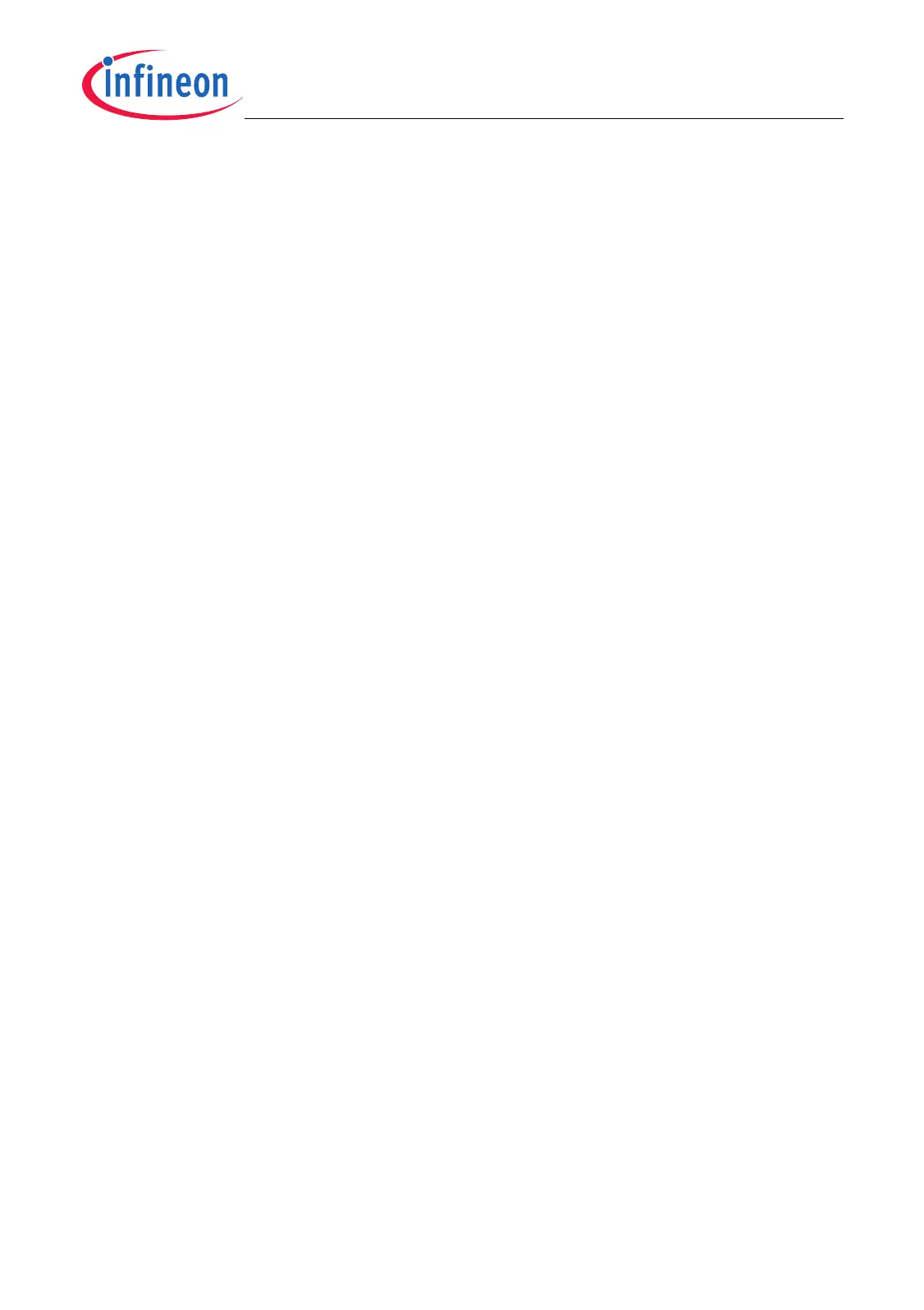TC1796
System Units (Vol. 1 of 2)
Peripheral Control Processor (PCP)
User’s Manual 11-117 V2.0, 2007-07
PCP, V2.0
In the example above, the COPY instruction increments the destination held in R5
(DST+), and the source address is left constant in R4 (SRC). All permutations of
decrement, increment or do not modify can be applied to either pointer register (R4 and
R5) by use of the SRC and DST fields (SRC-, SRC+ or SRC and DST-, DST+ or DST).
Building on this basic DMA method, scatter-gather DMA channels can be created.
11.12.7.2 BCOPY Instruction (Burst Copy)
The BCOPY instruction is in principle similar to the COPY instruction except that it uses
the FPI Burst mode to perform the transfers rather than performing individual
reads/writes. As for the COPY instruction, the FPI Bus is locked between the burst read
and burst write to ensure that a valid set of data is transferred. The BCOPY instruction
allows support of all burst sizes supported by FPI Burst Mode except a burst size of 1
(i.e. 2, 4 or 8 words). The CNT0 field is used to control the burst size. Both the source
and destination addresses (R4 and R5) must be correctly aligned for the burst size being
used (see the FPI Bus description for details). If either address is incorrectly aligned, the
PCP will generate an Illegal Operation Error Exit.
See also Page 11-127 for TC1796 specific details of the BCOPY instruction.

